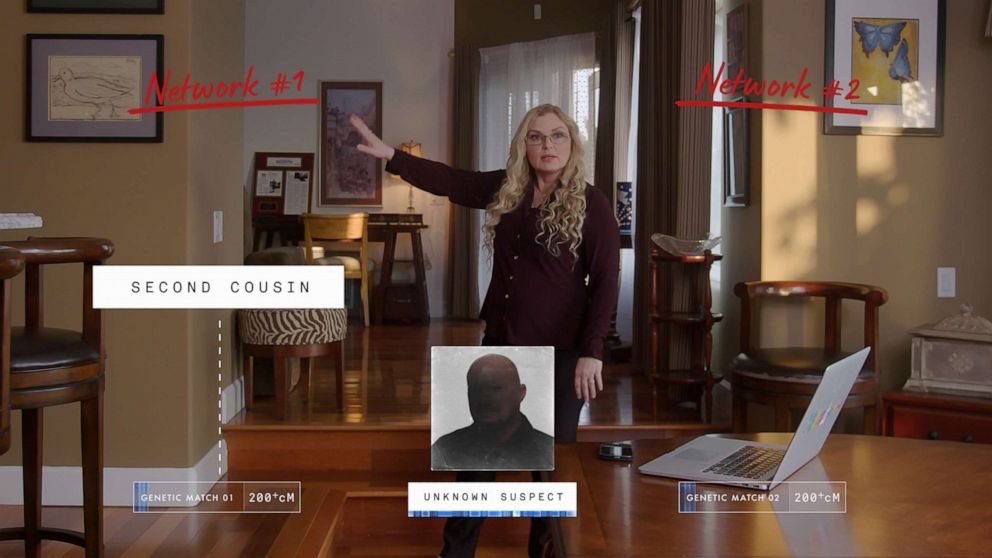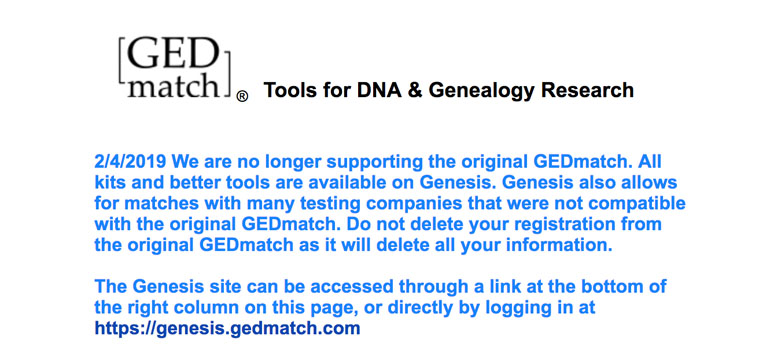A New Genealogy TV Show – “The Genetic Detective”
5Jun2020

Vicki’s note – I have watched the first 2 episodes of this new ABC TV series which started May 26 on Tuesdays at 9 p.m. Central Time. It hits the right notes for television true crime procedurals and learning more about DNA genealogy detective techniques. I don’t personally care for “procedural” detective mysteries – in television shows, movies or books, but watching Cece in action solving the often long cold cases is fascinating.
Based on an interview at the start of the series – Cece Moore “created” her self-designated “genetic genealogy” label when genetics first became viable to be used in conjunction with genealogy research. She reinvented herself from a model and educated herself to become a highly sought after genetic detective. Henry Louis Gates JR refers genetic issues of his “Finding Your Roots” television show guests to her.
Cece specialized in finding the birth families of adopted people. When police departments first asked her to apply her skills to finding murdering criminals, Cece had the same moral/ethical dilemma that many of us genealogists might empathize with – using the DNA test results of unaware relatives to find DNA family connections. She applies that to finding relatives of a criminal to narrow down who the criminal is. She resolved her uncertainty once she knew that individuals voluntarily submit DNA test results to GEDCOM which lists them for easy access of all .
Cece knows that she is doing a good thing to solve these crimes, and sometimes stop further (mass) murderers, even though she knows that some of the cases “no one can feel good about.” The victims families also appreciate having the long ago crimes be resolved. The show is worth a watch.
Genealogy is the fascinating study of our families – those individuals that shine, and those that did not. This is just one more aspect.
Cece uses DNA test results, vital records, and other genealogical documents to create the family trees of people related to the DNA tested criminal. She is able to pinpoint the (most probable) previously unnamed individual and identify who they are by DNA results.
The percent of shared DNA shows the exact relationships even when the family history hides the true connections – i.e. the older sister is really the mother of a child, the father was not the husband, etc. The amazing thing is that Cece researches and concludes the results in just a few hours – something we all would like to achieve!
You may also want to click to read further information on the television show, and DNA testing uses and issues here:
“…an online service to compare autosomal DNA data files from different testing companies.”
AND
https://en.wikipedia.org/wiki/GEDmatch
AND
How a Tiny Website Became the Police’s Go-To Genealogy Database
https://www.theatlantic.com/science/archive/2018/06/gedmatch-police-genealogy-database/561695/
“To track down the suspect, investigators had created a fake profile on GEDmatch and uploaded DNA from a 1980 crime scene, where it matched a distant relative of the man eventually arrested.”
AND
Dick Eastman’s Online Genealogy Newsletter – https://blog.eogn.com/2020/05/15/series-premiere-airdate-change-abc-news-presents-new-prime-time-series-the-genetic-detective/
AND
ABC News –










